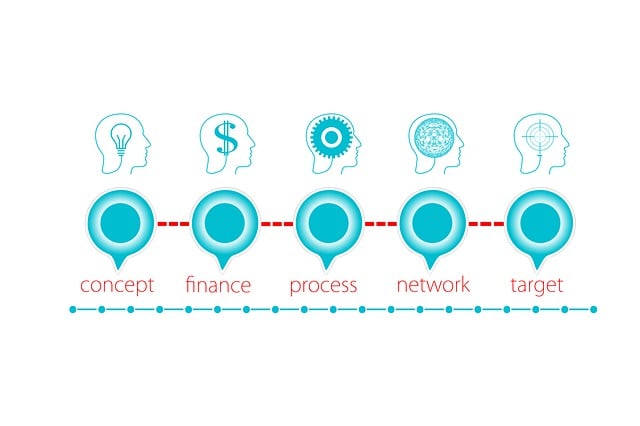Understanding the distinction between short-term and long-term capital requirements is crucial for effective capital planning. While short-term capital addresses immediate operational demands and unexpected expenses, long-term capital involves future growth initiatives, infrastructure upgrades, and replacement of aging assets. Companies should employ capital forecasting techniques using historical data, market trends, and strategic goals to accurately predict both short-term fluctuations and long-term needs. This holistic approach enables proactive capital planning, balancing assessing capital needs across different time horizons while optimizing capital efficiency. By integrating capital planning strategies that consider both immediate and future requirements, organizations can drive sustainable growth and adapt to evolving market conditions.
Evaluating long-term capital needs is crucial for any organization’s sustainable growth. This article guides you through the process, from understanding the distinction between short-term and long-term capital requirements to developing effective capital planning strategies. We explore methods for assessing your current capital position, balancing immediate needs with future vision, and implementing advanced capital forecasting and optimization techniques to enhance overall capital efficiency.
- Understanding Short-term vs Long-term Capital Requirements
- Assessing Your Organization's Current Capital Position
- Developing Effective Capital Planning Strategies
- Balancing Short-term Needs with Long-term Vision
- Implementing Capital Forecasting and Optimization Techniques
Understanding Short-term vs Long-term Capital Requirements

Understanding the distinction between short-term and long-term capital requirements is paramount in effective capital planning strategies. While short-term capital needs focus on immediate operational demands, financing current assets, or covering unexpected expenses, long-term capital involves assessing resources required for future growth, expansion projects, or replacing aging infrastructure. This differentiation is crucial as it enables businesses to balance their capital needs and optimize capital efficiency.
Companies must employ capital forecasting techniques to accurately predict future requirements. By analyzing historical data, market trends, and strategic goals, organizations can anticipate both short-term fluctuations and long-term capital demands. This holistic approach ensures that capital planning strategies are not just reactive but proactive, fostering sustainable growth while efficiently allocating resources across different time horizons.
Assessing Your Organization's Current Capital Position

Evaluating your organization’s current capital position is a crucial step in determining its long-term financial health and sustainability. It involves a comprehensive analysis of both short-term and long-term capital needs, allowing businesses to make informed decisions about their future growth and investment strategies. This initial assessment helps identify the existing resources, assets, and liabilities, providing a clear picture of the organization’s current financial standing.
By comparing the short-term vs. long-term capital requirements, companies can effectively balance their capital allocation. Capital planning strategies should focus on optimizing efficiency, ensuring that resources are directed towards initiatives with the highest return on investment. Through accurate capital forecasting, organizations can anticipate future needs and implement strategic plans to meet them. This balancing act is vital for sustainable growth, as it prevents over-reliance on short-term funding while also ensuring adequate resources for long-term goals.
Developing Effective Capital Planning Strategies

In evaluating long-term capital needs, it’s crucial to develop effective capital planning strategies that balance short-term and long-term financial goals. The first step involves assessing current and projected capital needs across various areas of a business or organization. This includes not just immediate infrastructure upgrades but also future growth initiatives, technology advancements, and contingency plans. Accurate capital forecasting is key; organizations should employ robust data analytics and modeling to predict future capital requirements with reasonable certainty.
Once assessed, capital planning strategies must optimize capital efficiency. This means making strategic decisions that maximize the return on investments while ensuring adequate resources are available for long-term sustainability. Balancing capital needs requires a nuanced approach, considering both qualitative factors like market trends and competitive landscape, and quantitative elements such as financial models and risk assessments. By thoughtfully integrating short-term and long-term perspectives into capital planning, organizations can navigate the complexities of business dynamics and foster sustainable growth.
Balancing Short-term Needs with Long-term Vision

Evaluating long-term capital needs requires a delicate balance between addressing immediate short-term requirements and fostering sustainable growth over an extended period. Businesses must adopt a strategic approach that integrates both perspectives to achieve optimal success. Assessing capital needs involves scrutinizing current operational demands while forecasting future goals, ensuring resources align with the organization’s vision.
Capital planning strategies should encompass diverse methods, from financial modeling and trend analysis to scenario planning and risk assessment. By balancing capital needs, organizations can optimize their resource allocation, enhance capital efficiency, and prepare for unforeseen challenges. This holistic approach facilitates sustainable development by aligning short-term solutions with long-term aspirations, ultimately driving the business forward in an ever-evolving market.
Implementing Capital Forecasting and Optimization Techniques

Evaluating long-term capital needs requires a shift from short-term perspectives to comprehensive, forward-thinking strategies. Organizations must move beyond simply meeting immediate demands and begin assessing future requirements to ensure sustainable growth. Implementing robust capital forecasting techniques is a cornerstone of this process. By utilizing historical data, market trends, and sophisticated analytics, businesses can predict future capital needs with greater accuracy.
This data-driven approach allows for more effective capital planning strategies that balance short-term operational demands with long-term aspirations. Optimizing capital efficiency becomes a key focus, ensuring investments are strategically allocated to projects with the highest return on investment. Through continuous monitoring and adjustments, organizations can adapt their capital planning as market conditions evolve, ultimately maximizing resource utilization and achieving their long-term objectives.






